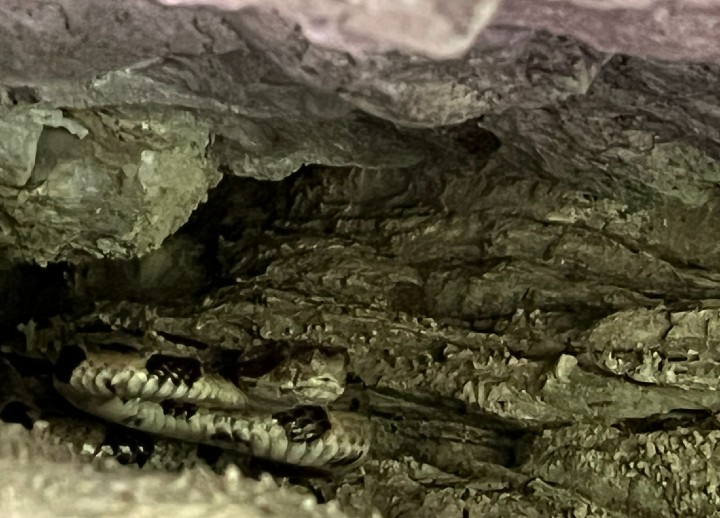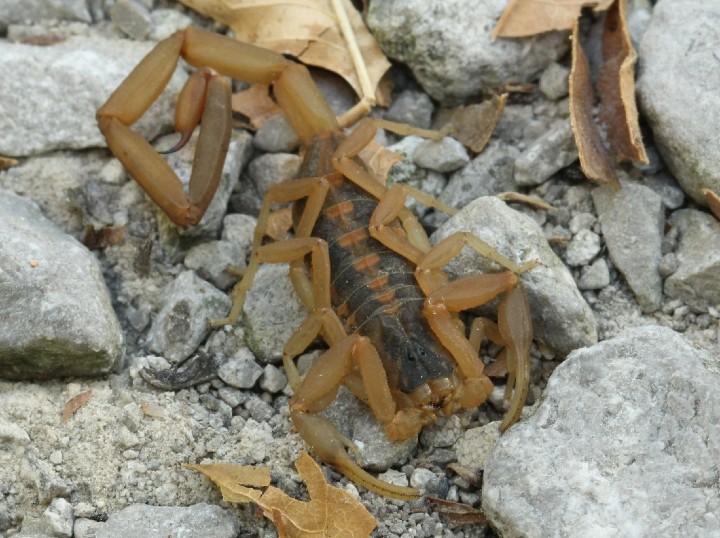Plainbelly Water Snakes can be found considerable distances from water, more so than most water snakes.

Lesser Angle-winged Katydid.

The name “Cottonmouth” is derived from the snake’s habit of opening its mouth in a defensive posture when it feels threatened. Other names for this snake are “Water Moccasin” and “Trap Jaw.”

A nice-sized Crayfish.

A young Timber Rattlesnake hanging out in limestone bluffs.

The Western Ribbon Snake is a semiaquatic species and most commonly associated with brushy or grassy areas close to water. It may be found near swamps, marshes, ponds, rivers, streams, lakes or damp meadows.

The Cottonmouth is usually found in or around water. When swimming, the cottonmouth holds its head above water with most of its body barely touching the surface.

Plainbelly Water Snake.

A Cottonmouth crossing Snake Road in southern Illinois.

A boldly marked young Cottonmouth.

On my last day I visited these glades in Missouri.

A "lifer" Lined Snake.

Striped Bark Scorpions were a common sight.

A young Eastern Yellowbelly Racer.

A Rabid Wolf Spider carrying her babies. Immediately after the Wolf Spiderlings emerge from their eggs, they clamber up onto their mother's back. The mother carries the spiderlings for several weeks before they are large enough to disperse and fend for themselves. No other spiders are currently known to do this.

The Smooth Earth Snake feeds primarily on earthworms, but takes other small invertebrates such as insects and snails.

Although the Central Newt is usually only about four inches in total length, these creatures have a surprisingly long lifespan of well over 10 years in the wild.

A young Eastern Yellowbelly Racer. Upon hatching, baby racers have a dorsal pattern of dark-gray to reddish-brown blotches on a light-gray to brown body. The juvenile’s pattern becomes obscure with age, eventually resulting in a unicolored snake.

The Dwarf American Toad is rather small – about 1-1/2 to 2-1/2 inches. These creatures are often brick red in color without any distinct pattern.

A young Red Milk Snake in Missouri.

A "lifer" Southern Redback Salamander.

The final snake of the trip was this super cool baby Western Worm Snake.

Click here to see photos from 2021
|